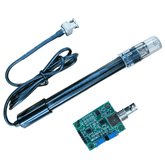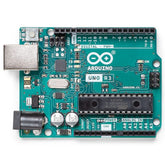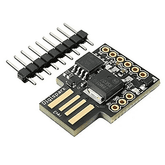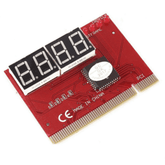All About pH Sensor – Working, Types & Applications Guide
Summary
Do you want to understand the fundamentals of pH sensors and their applications?
If the answer is yes! Then this blog is a must-read. since we've covered everything from pH sensor operation to the many types available and how to test pH using a microcontroller.
pH sensors are widely used in many different industries, including food and beverage manufacturing and water quality monitoring.
This informative article regarding pH sensors is sure to spark your interest, regardless of your level of experience.
What is a pH sensor
Water pollution is caused when many chemicals, sewage, and fertilizers are dumped into rivers.
It must be prevented by measuring water quality because this harms human and aquatic health. The water pH sensor is a simple device that makes it easy to measure the quality of the water.

One of the most essential tools for analyzing water quality is the pH sensor, which is widely used in water quality monitoring.
This pH sensor measures the alkalinity and acidity of water and other liquids.
When used appropriately, pH sensors assist in ensuring the safety and purity of effluent from manufacturing operations.
The usual way for determining the quality or pH of water is to use pH indicators. Although they cannot offer exact pH readings, they can be used to determine if a chemical is acidic or basic.
Litmus, phenolphthalein, and methyl orange are the three primary pH indicators frequently used in laboratories.
To estimate pH, these indicators rely on visible color changes. However, it is now standard procedure to measure pH with a pH meter or sensor.

pH Sensor Working Principle
A pH sensor works by exchanging ions between the test solution and the inner solutions within the sensor's glass electrode. This exchange occurs over a fine glass membrane, allowing the sensor to accurately determine the acidity or alkalinity of the liquid.
With continued usage, the glass membrane's porosity decreases, lowering the probe's performance.
The Ph Sensor is often made of glass and has a rod-like construction with a bulb at the bottom that holds the sensor.

A glass bulb that is specifically made to be selective to hydrogen-ion concentration is present in the glass electrode used to measure pH.
A potential difference across the glass bulb occurs when hydrogen ions combine with positively charged ions in the test solution.
An electrical amplifier detects this potential and converts the potential difference created during the test between the two electrodes into pH units. This method aids in precisely determining the solution's acidity or alkalinity.
The Nernst equation shows how the electrochemical potential across the glass bulb changes with pH.
The reference electrode, connected to the display as a metal conductor, remains unaffected by the pH of the fluid.
A porous ceramic membrane allows the electrolyte solution—typically potassium chloride—in which this conductor is submerged to interact with the test solution. Voltmeters that display voltage in pH units make up the display.
This pH sensor is connected to the transducer called the transmitter or signal conversion board.
This board includes a pH sensor connector which is connected to the sensor probe, pH limit setting, Analog reading Offsets and six IO pins.

- This pH sensor is a piece of equipment used in science to determine whether a solution is naturally acidic or alkaline.
- pH levels can be detected between 0 and 14 by the sensor set.
- This pH sensor kit can be used to assess the quality of both soil and water.
- As part of the sensor package, a pH probe and sensor board will be used to condition the signal.
Specifications

|
voltage |
5V |
|
current |
5-10mA |
|
Concentration range |
pH 0-14 |
|
temperature |
0 – 60 Degree Celcius |
|
Response time |
<= 5 s |
|
Stability time |
<=120 s |
|
Power consumption |
<=0.5 W |
|
Size |
42mm x 32mm x 20mm |
|
Weight |
25g |
Types of pH sensors
There are several types of pH sensors available in the market today, some of them include:
Combination Sensor:
As time goes on, these materials might get more durable, but the underlying science doesn't change.
The combination sensor uses a reference electrode and a measuring electrode to produce an electric signal from the difference between the two electrodes that can be used to calculate the pH.
Differential pH sensor:
Similar reference and sensing electrodes are used in this type of sensor as in combination sensors, but they are coupled with a third metal grounding electrode to maintain accuracy if contamination or rapidly changing pH.
To reduce background noise on pH readings, the electrode is used almost like a safety net.
Overall, the industrial pH combination sensors won't have any issues in such severe settings if maintained appropriately.
Lab grade pH sensor:
The lab-grade pH sensor is an improvement over consumer-grade pH sensors because it uses better materials in a combination electrode arrangement to measure temperatures and pH levels that can be more intense in wastewater and research situations.
Process pH sensor:
Combination sensor technology is utilized in bigger, more durable cases for pH sensors used in industrial settings.
These sensors have a process connection, allowing for continuous pH monitoring in your water. These sensors are extremely durable and may be mounted directly in a pipe or inside a tank.
Advantages of pH Sensors
Increased Accuracy: pH sensors offer greater accuracy for measuring the acidity or alkalinity of liquids and other solutions than traditional methods like paper test strips, so you can be sure that your measurements are reliable.
Reduced Cost: Using a pH sensor will save money in terms of equipment costs when compared to purchasing multiple sets of paper-based testing kits for different tests over time; they also save on labor costs since fewer people have to perform the same process with one device as opposed to many separate ones.
Faster Results: Electric current is transmitted through a probe into any liquid sample being tested, allowing near-instantaneous results without waiting for thick substances (such as yogurt) which may otherwise take long waits between dips at standard intervals while trying an average manual solution such as dipsticks or chemical reagents; thus resulting in tremendous savings with regard to turnaround times while still maintaining high-quality control standards.
Improved Repeatability: With regular use, some wear occurs even with manual probes when continuously dipping them into various samples - this causes inaccuracy due to small variations having accumulated across usage cycles; instead using a highly accurate pH Sensor these problems are easily avoided by thanks their repeatable performance by providing consistent readings each time it’s used no matter how often.
Disadvantages of pH Sensors
- Expensive cost of acquisition and costs associated with maintenance over time
- High susceptibility to interference from external sources such as temperature or other chemicals present in the environment
- Potential for inaccuracies due to errors created by improper calibration techniques
- Electrodes need frequent replacement which increases operational costs significantly
- Poor performance within extreme pH ranges.
How to measure the pH with a Microcontroller

|
Arduino |
pH sensor(Transmitter) |
|
5V |
Vcc |
|
GND |
GND |
|
A0 |
pH out |
Code:
#define SensorPin A0
unsigned long int avgValue;
float b;
int buf[10],temp;
void setup()
{
Serial.begin(9600);
Serial.println("Ready");
}
void loop()
{
for(int i=0;i<10;i++)
{
buf[i]=analogRead(SensorPin);
delay(10);
}
for(int i=0;i<9;i++)
{
for(int j=i+1;j<10;j++)
{
if(buf[i]>buf[j])
{
temp=buf[i];
buf[i]=buf[j];
buf[j]=temp;
}
}
}
avgValue=0;
for(int i=2;i<8;i++) //take the average value of 6 center sample
avgValue+=buf[i];
float phValue=(float)avgValue*5.0/1024/6; //convert the analog into millivolt
phValue=3.5*phValue; //convert the millivolt into pH value
Serial.print(" pH:");
Serial.print(phValue,2);
}
Applications:
- Chemical and Paramedical industries
- Agricultural industries
- Beverage and food industries
- Water purification plants
- Waste water treatment
Conclusion
In this blog post, we have learnt that a pH sensor It's an absolute game-changer that can measure the acidity or alkalinity of a solution!
If you are aware of the features and options available, selecting the best pH sensor for your needs might be lot easier.
Because of its extraordinary adaptability, this equipment used in a wide range of sectors, including environmental monitoring, food and beverage manufacturing, and agriculture.
The pH sensor is a vital tool for your needs, regardless of your degree of experience.
It is thus highly recommended that you get your own pH sensor as soon as possible so that you may learn more about the intriguing topic of pH measurement.
If you appreciate our work don't forget to share this post and leave your opinion in the comment box.
Please do check out other blog posts about Popular electronics
Make sure you check out our wide range of products and collections (we offer some exciting deals!)










